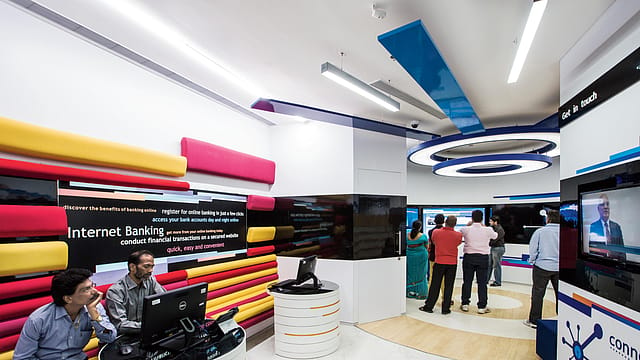Decoding the Rs 82.6 lakh crore banking NPAs
ADVERTISEMENT

The sixteenth Lok Sabha has seen non-performing assets, or NPAs, as the key subject of question on 26 instances. In 2018, 2 of the 4 such instances have been seen after the Nirav Modi – Punjab National Bank debacle.
In the latest instance, on March 9, Indian National Congress’ Deepender Singh Hooda, member of parliament representing Rohtak (Haryana) put forth a question for the finance ministry asking for details of amount and percentage of NPAs against total advances of each of the public and private sector banks.
In response to the question, minister of state for finance, Shiv Pratap Shukla quoted Reserve Bank of India’s data on domestic operations for gross NPAs, as of December 31, 2017, for 42 public and private sector banks which added up to Rs 82.6 lakh crore. Of this, 21 PSBs’ total gross NPAs work out to Rs 73.3 lakh crore – 88.74% of the total.
Among the PSBs, State Bank of India (which also includes its erstwhile associate banks) has the lion share of 24.39% of the total gross NPAs. SBI’s Rs 2 lakh crore of gross NPAs account for 27.49% of the total of 21 PSBs’ gross NPAs. With gross NPAs worth Rs 55,200 crore, Punjab National Bank accounts for 6.68% and 7.53% of the total and PSBs’ gross NPAs each. IDBI Bank, Bank of India, and Bank of Baroda with gross NPAs worth Rs 44,542, crore, Rs 43,474, crore and Rs 41,649 crore each make up the top 5 PSBs with maximum gross NPAs. These five PSBs have total gross NPAs of Rs 3.86 lakh crore – which constitutes 46.76% of the total gross NPAs of the 42 banks, and 52.69% of the gross NPAs of the 21 PSBs.
December 2025
The annual Fortune 500 India list, the definitive compendium of corporate performance, is out. This year, the cumulative revenue of the Fortune 500 India companies has breached $2 trillion for the first time. Plus, find out which are the Best B-schools in India.
The provisional RBI data also has information on the individual banks’ gross NPAs as percent of their gross advances. Among PSBs, IDBI Bank, UCO Bank, Indian Overseas Bank, United Bank of India, and Dena Bank have the highest gross NPAs to gross advances’ percentage at 24%, 23.29%, 22.74%, 20.10% and 19.56% each. The banks with higher gross NPAs have relatively lower ratio. Like, SBI, Punjab National Bank, Bank of India and Bank of Baroda have gross NPAs to gross advances ration of 12.34%, 12.88%, 15.49% and 13.22% each.
Contrary to PSBs, 21 private sector banks have total gross NPAs of Rs 93,044 crore – 11.26 of the total gross NPAs worth Rs 8.26 lakh crore. In case of private banks, the scale effect can be seen in case of ICICI Bank and Axis Bank, with gross NPAs of Rs 33,849 crore and Rs 19,247 crore each. While ICICI Bank accounts for 4.10% of the total and 36.38% of the private sector banks’ gross NPAs. Similar numbers of Axis Bank stands at 2.33% and 20.69% each. Together, ICICI Bank and Axis Bank account for 57.07% of the private banks’ gross NPAs. While HDFC Bank, with 8,042 crore worth of gross NPAs, accounts for 8.64% of the private banks’ total, its share of the 42 banks’ total is just 0.97%.
On the gross NPAs to gross advances front, private banks also have a mismatch. As, Jammu & Kashmir Bank and Catholic Syrian Bank (with gross NPAs worth Rs 6,232 crore and Rs 746 crore each) have a ratio of 10.08% and 7.64% respectively. While ICICI Bank’s gross NPAs to gross advances ratio is 7.50%, while that of Axis Bank and HDFC Bank are 5.12% and 1.31% each.
19 of the 21 private banks’ share of total gross NPAs is less than 1%, while only two PSBs – Vijaya Bank and Punjab and Sind Bank – claim that feat. Yet, the average gross NPAs of Rs 6,935 crore is 3.3 times more that the average gross NPAs of Rs 2,103 crore for the 19 private sector banks.
NPAs and PSBs have almost become synonymous. And there is an imperative need for urgent and serious reforms.
